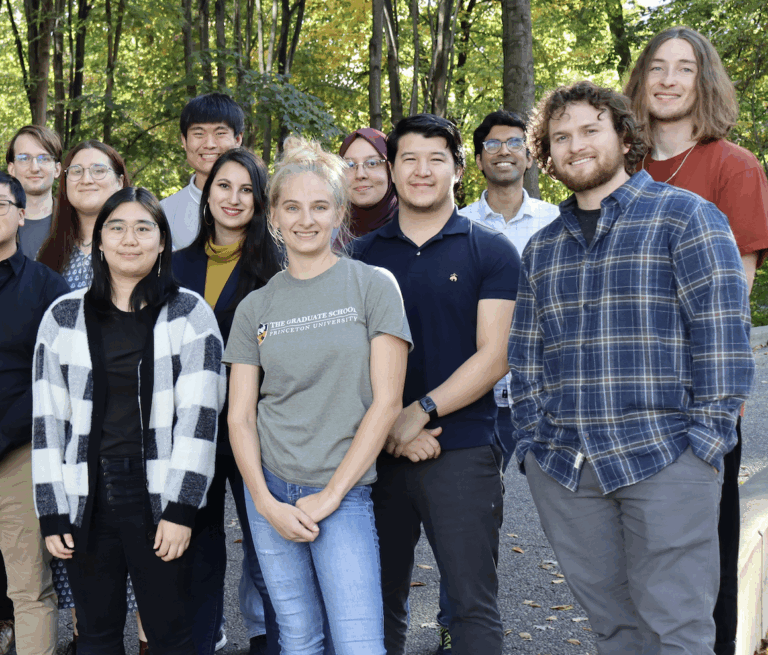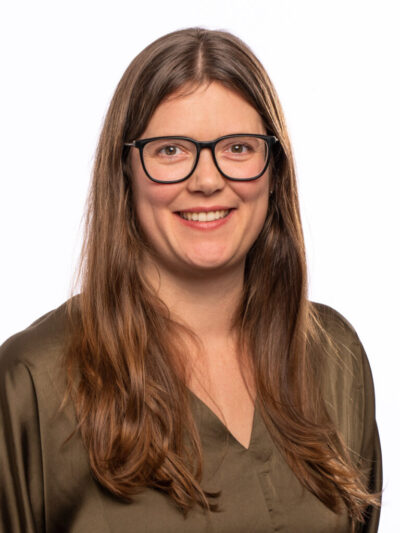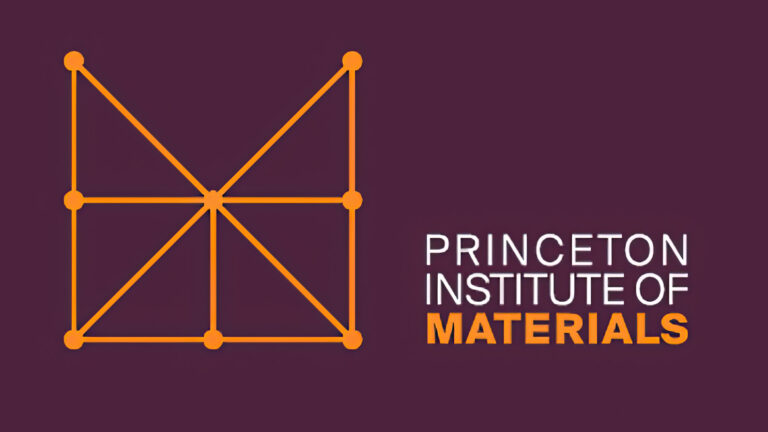

Leslie Schoop
Contact:
Leslie M. Schoop
Professor of Chemistry
[email protected]
Frick Laboratory, 393
609-258-9390
Faculty Assistant:
Nagwan Ali
Faculty / Grants Assistant
[email protected]
Frick Laboratory, 389
609-258-2330
Research Focus
Some materials are not easily described with conventional, textbook, condensed matter physics laws. These quantum materials can exhibit exotic properties that could help improve information technology (for example: being able to build quantum computers). Additionally, they can be hosts of completely new physics and can even help to increase our understanding of the universe. New exciting phenomena are rapidly predicted by theoretical physicists. In order to study these properties, materials that fulfill the requirements need to be discovered first. This is where chemistry comes into play. Combining lessons from inorganic chemistry with electronic structure calculations gives predictive power to find these materials. After identifying interesting candidates, we will synthesize and characterize them.
Our group operates with the following procedure: First, inspiration comes from recognizing patterns in electronic structure, crystal structure, and properties of known materials. Then, this knowledge is used to find a compound that could be a starting point to realize a desired property in a new material. Chemical concepts about bonding and electron count are the most important tools for achieving this. Subsequently, the electronic structure is calculated using available codes. If it confirms the initial idea, the material will be synthesized and characterized. To make the new materials, we use the combined knowledge of solid state chemistry, including methods such as flux growth, vapor transport, and Bridgman growth. Finally, if the crystal structure assumed for the electronic structure calculation and the real crystal structure match, the properties can be measured.
Honors
2022 NSF CAREER Award
2021 Office of Naval Research Young Investigator Program, Awardee
2021 Sloan Fellowship
2020 Packard Fellowship in Science and Engineering
2019 EPiQS Materials Synthesis Investigator – Gordon and Betty Moore Foundation
2019 Beckman Young Investigator Awardee
2015 Minerva Fast Track Fellowship, Max Planck Society
Selected Publications
Y. Wang, I. Petrides, G. McNamara, M. M. Hosen, S. Lei, Y. Wu, J. L. Hart, H. Lv, J. Yan, D. Xiao, J. J. Cha, P. Narang, L. M. Schoop, and K. S. Burch Axial Higgs mode detected by quantum pathway interference in RTe3. Nature 606, 896-901 (2022). web. Press Release.
M. Jovanovic and L. M. Schoop Simple Chemical Rules for Predicting Band Structures of Kagome Materials J. Am. Chem. Soc. 144, 24, 10978-10991 (2022). web.
G. Villalpando, A. M. Ferrenti, R. Singha, X. Song, G. Cheng, N. Yao, and L. M. Schoop, Chemical Exfoliation toward Magnetic 2D VOCl Monolayers. ACS Nano16 (9) 13814–13820 (2022) web.
J. W. Stiles, A. L. Soltys, X. Song, S. H. Lapidus, C. B. Arnold, and L. M. Schoop, Unlocking High Capacity and Fast Na+ Diffusion of HxCrS2 by Proton-Exchange Pretreatment. Adv. Mater. 2209811 (2023) web.
X. Sоng, R. Singha, G. Cheng, Y.-W. Yeh, F. Kamm, J. F. Khoury, B. L. Hoff, J. W. Stiles, F. Pielnhofer, P. E. Batson, N. Yao, and L. M. Schoop, Synthesis of an aqueous, air-stable, superconducting 1T′-WS2 monolayer ink.Sci. Adv. 9, 12, (2023) web. Press Release.
Y. Jia†, F. Yuan†, G. Cheng, Y. Tang, G. Yu, T. Song, P. Wang, R. Singha, A. J. Uzan-Narovlansky, M. Onyszczak, K. Watanabe, T. Taniguchi, N. Yao, L. M. Schoop* and S. Wu*, Surface-confined two-dimensional mass transport and crystal growth on monolayer materials. Nat. Synth(2023). web. Press Release.†first authors *corresponding authors
R. Singha, T. H. Salters, S. M. L. Teicher, S. Lei, J. F. Khoury, N. P. Ong, and L. M. Schoop. Evolving Devil’s Staircase Magnetization from Tunable Charge Density Waves in Nonsymmorphic Dirac Semimetals. Adv. Mater. 2021. web
S. Lei, S. M. L. Teicher, A. Topp, K. Cai, J. Lin, G. Cheng, T. H. Salters, F. Rodolakis, J. L. McChesney, S. Lapidus, N. Yao, M. Krivenkov, D. Marchenko, A. Varykhalov, C. R. Ast, R. Car, J. Cano, M. G. Vergniory, N. P. Ong, and L. M. Schoop. Band Engineering of Dirac Semimetals Using Charge Density Waves. Adv. Mater. 33, 2101591. 2021. web. Press Release
J. F. Khoury and L. M. Schoop. Chemical bonds in topological materials. Trends in Chemistry, 3, 9, pg. 700-715. 2021. web
R. J. Kirby, A. Ferrenti, C. Weinberg, S. Klemenz, M. Oudah, S. Lei, C. P. Weber, D. Fausti, G. Scholes, and L. M. Schoop. Transient Drude Response Dominates Near- Infrared Pump-Probe Reflectivity in Nodal-Line Semimetals ZrSiS and ZrSiSe. J. Phys. Chem. Lett. 91, 2020. web
S. Klemenz, A. K. Hay, S. M. L. Teicher, A. Topp, J. Cano, and L. M. Schoop. The role of delocalized chemical bonding in square-net-based topological semimetals. J. Am. Chem. Soc. 142, 13, 6350-6359, 2020. web. JACS Spotlight. Selected to be ACS “Editor’s Choice”. Selected for JACS Young Investigators Issue
S. Lei, J. Lin, Y. Jia, M. Gray, A. Topp, G. Farahi, S. Klemenz, T. Gao, F. Rodolakis, J. L. McChesney, C. R. Ast, A. Yazdani, K. S. Burch, S. Wu, N. P. Ong, and L. M. Schoop. High mobility in a van der Waals layered antiferromagnetic metal. Sci. Adv. Vol. 6, no. 6, eaay6407, 2020. web. Press Release
X. Song, G. Cheng, D. Weber, F. Pielnhofer, S. Lei, S. Klemenz, Y. W. Yeh, K. A. Filsinger, C. B. Arnold, N. Yao, and L. M. Schoop. Soft chemical synthesis of HxCrS2: an antiferromagnetic material with alternating amorphous and crystalline layers. J. Am. Chem. Soc., 2019. web
L.M. Schoop, F Pielnhofer, and BV Lotsch. Chemical Principles of Topological Semimetals. Chem. Mater. 30, 3155-3176, 2018. web
L.M. Schoop, MN Ali, C Straßer, A Topp, A Varykhalov, D Marchenko, Vi Duppel, SSP Parkin, BV Lotsch, and CR Ast. Dirac Cone Protected by Non- Symmorphic Symmetry and 3D Dirac Line Node in ZrSiS. Nat. Comm., 7:11696, 2016.
Related News

Alumni Q&A: Brianna Hoff chooses her own path

Leslie Schoop tapped for leadership role at new NSF-funded AI institute


